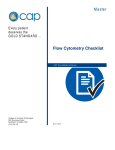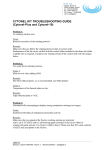Download Data Sheet
Transcript
Pan Cytokeratin Plus [AE1/AE3+8/18] Concentrated and Prediluted Cocktail Antibody Control Number: 901-162-032415 Catalog Number: CM 162 A, B, C PM 162 AA, H IP 162 G10 OAI 162 T60 Description: 0.1, 0.5, 1.0 ml, concentrated 6.0, 25 ml, prediluted 10 ml, prediluted 60 tests, prediluted Dilution: 1:50-1:100 Ready-to-use Ready-to-use Ready-to-use Diluent: Da Vinci Green N/A N/A N/A Intended Use: For In Vitro Diagnostic Use Pan Cytokeratin Plus [AE1/AE3+8/18] is a mouse monoclonal antibody cocktail that is intended for laboratory use in the qualitative identification of a broad spectrum of acidic and basic cytokeratin proteins by immunohistochemistry (IHC) in formalin-fixed paraffin-embedded (FFPE) human tissues. The clinical interpretation of any staining or its absence should be complemented by morphological studies using proper controls and should be evaluated within the context of the patient’s clinical history and other diagnostic tests by a qualified pathologist. Summary and Explanation: AE1/AE3 recognizes acidic and basic subfamilies of cytokeratins. The cocktail of these two antibodies can be used to detect most human epithelia. The acidic cytokeratins have molecular weights of 56.5, 55, 51, 50, 50, 48 46, 45, and 40 kDa. The basic cytokeratins have molecular weights of 65-67, 64, 59, 58, 56 and 52 kDa. Clone 5D3 recognizes cytokeratin (CK) 8 and 18 intermediate filament proteins. These are 52.5 kDa and 45 kDa respectively. In normal tissues, 5D3 recognizes all simple and glandular epithelium. In the past, AE1/AE3 has had problems marking certain tissues types and adenocarcinomas. The addition of CK 8/18 remedies some of these problems. For example, a study of twenty-eight lipid cell (steroid cell) tumors of the ovary were studied by immunohistochemistry; 46% were positive for Cytokeratin 8/18 antibody, 37% were positive with the Cytokeratin cocktail AE1/AE3. Principle of Procedure: Antigen detection in tissues and cells is a multi-step immunohistochemical process. The initial step binds the primary antibody to its specific epitope. A secondary antibody may be applied to bind the primary antibody, followed by an enzyme labeled polymer; or an enzyme labeled polymer may be applied directly to bind the primary antibody. The detection of the bound primary antibody is evidenced by an enzyme-mediated colorimetric reaction. Source: Mouse monoclonal Species Reactivity: Human, mouse and rat Clone: AE1/AE3 + 5D3 Isotype: IgG1 Total Protein Concentration: ~10 mg/ml. Call for lot specific Ig concentration. Epitope/Antigen: AE1/AE3 + CK8/18 Cellular Localization: Cytoplasmic Positive Control: Skin or adenocarcinoma Known Applications: Immunohistochemistry (formalin-fixed paraffin-embedded tissues) Supplied As: Buffer with protein carrier and preservative Storage and Stability: Store at 2ºC to 8ºC. Do not use after expiration date printed on vial. If reagents are stored under conditions other than those specified in the package insert, they must be verified by the user. Diluted reagents should be used promptly; any remaining reagent should be stored at 2ºC to 8ºC. Protocol Recommendations (intelliPATH and manual use): Peroxide Block: Block for 5 minutes with Biocare's Peroxidazed 1. Pretreatment Protocol: Pretreatment may be performed by heat retrieval or enzyme digestion. Heat Retrieval Method: Pretreatment Solution (recommended): Reveal Retrieve sections under pressure using Biocare's Decloaking Chamber, followed by a wash in distilled water. Allow solution to cool for 10 minutes then wash in distilled water. Digestion Method: Digest with Trypsin enzyme for 5 minutes at 37ºC or for 20 minutes at RT. ISO 9001&13485 CERTIFIED Protocol Recommendations (intelliPATH and manual use) Cont'd: Protein Block (Optional): Incubate for 5-10 minutes at RT with Biocare's Background Punisher. Primary Antibody: Incubate for 30 minutes at RT. Probe: Incubate for 10 minutes at RT with a secondary probe. Polymer: Incubate for 10-20 minutes at RT with a tertiary polymer. Chromogen: Incubate for 5 minutes at RT with Biocare's DAB - OR - Incubate for 5-7 minutes at RT with Biocare's Warp Red. Counterstain: Counterstain with hematoxylin. Rinse with deionized water. Apply Tacha's Bluing Solution for 1 minute. Rinse with deionized water. intelliPATH™ Automated Slide Stainer: IP162 is intended for use on the intelliPATH™ Automated Slide Stainer. Refer to the intelliPATH Automated Slide Stainer manual for specific instructions on its use. When using the intelliPATH, peroxide block with intelliPATH Peroxidase Blocking Reagent (IPB5000) may be performed following pretreatment. Protocol Recommendations (ONCORE Automated Slide Staining System): OAI162 is intended for use with the ONCORE Automated Slide Staining System. Refer to the ONCORE Automated Slide Staining System User Manual for specific instructions on its use. Protocol parameters in the ONCORE Automated Slide Stainer Protocol Editor should be programmed as follows: Protocol Name: Pan CK Plus Protocol Template (Description): Ms HRP Template 1 Dewaxing (DS Option): DS Buffer Antigen Retrieval (AR Option): AR2, low pH; 90°C Reagent Name, Time, Temp.: Pan CK Plus, 30 min., 25°C Technical Note: 1. With cytokeratin markers, heat retrieval may provide a higher sensitivity assay; whereas, enzyme digestion may produce greater specificity. Users should validate the pretreatment method for their specific application. 2. This antibody has been optimized for use with Biocare's MACH 4 Universal HRPPolymer Detection, intelliPATH Universal HRP Detection Kit and ONCORE HRP Detection. Other Biocare polymer detection kits may be used; however, users must validate incubation times and protocols for their specific application. Use TBS for washing steps. Limitations: The optimum antibody dilution and protocols for a specific application can vary. These include, but are not limited to fixation, heat-retrieval method, incubation times, tissue section thickness and detection kit used. Due to the superior sensitivity of these unique reagents, the recommended incubation times and titers listed are not applicable to other detection systems, as results may vary. The data sheet recommendations and protocols are based on exclusive use of Biocare products. Ultimately, it is the responsibility of the investigator to determine optimal conditions. The clinical interpretation of any positive or negative staining should be evaluated within the context of clinical presentation, morphology and other histopathological criteria by a qualified pathologist. The clinical interpretation of any positive or negative staining should be complemented by morphological studies using proper positive and negative internal and external controls as well as other diagnostic tests. Quality Control: Refer to CLSI Quality Standards for Design and Implementation of Immunohistochemistry Assays; Approved Guideline-Second edition (I/LA28-A2). CLSI Wayne, PA, USA (www.clsi.org). 2011. Page 1 of 2 Pan Cytokeratin Plus [AE1/AE3+8/18] Concentrated and Prediluted Cocktail Antibody Control Number: 901-162-032415 Precautions: 1. This antibody contains less than 0.1% sodium azide. Concentrations less than 0.1% are not reportable hazardous materials according to U.S. 29 CFR 1910.1200, OSHA Hazard communication and EC Directive 91/155/EC. Sodium azide (NaN3) used as a preservative is toxic if ingested. Sodium azide may react with lead and copper plumbing to form highly explosive metal azides. Upon disposal, flush with large volumes of water to prevent azide build-up in plumbing. (Center for Disease Control, 1976, National Institute of Occupational Safety and Health, 1976) (6) 2. Specimens, before and after fixation, and all materials exposed to them should be handled as if capable of transmitting infection and disposed of with proper precautions. Never pipette reagents by mouth and avoid contacting the skin and mucous membranes with reagents and specimens. If reagents or specimens come into contact with sensitive areas, wash with copious amounts of water. (7) 3. Microbial contamination of reagents may result in an increase in nonspecific staining. 4. Incubation times or temperatures other than those specified may give erroneous results. The user must validate any such change. 5. Do not use reagent after the expiration date printed on the vial. 6. The SDS is available upon request and is located at http://biocare.net/. ISO 9001&13485 CERTIFIED Troubleshooting: Follow the antibody specific protocol recommendations according to data sheet provided. If atypical results occur, contact Biocare's Technical Support at 1-800-542-2002. References: 1. Seidman JD, Abbondanzo SL, Bratthauer GL. Lipid cell (steroid cell) tumor of the ovary: immunophenotype with analysis of potential pitfall due to endogenous biotinlike activity. Int J Gynecol Pathol. 1995 Oct; 14(4):331-8. 2. Bunton TE. The immunocytochemistry of cytokeratin in fish tissues. Vet Pathol. 1993 Sep; 30(5):418-25. 3. Sorensen SC, et al. Structural distinctions among human breast epithelial cells revealed by the monoclonal antikeratin antibodies AEI and AE3. J Pathol. 1987 Oct; 153(2):151-62. 4. Pinkus GS, Etheridge CL, O'Connor EM. Are keratin proteins a better tumor marker than epithelial membrane antigen? A comparative immunohistochemical study of various paraffin-embedded neoplasms using monoclonal and polyclonal antibodies. Am J Clin Pathol. 1986 Mar; 85(3):269-77. 5. Pinkus GS, et al. Optimal immunoreactivity of keratin proteins in formalin-fixed, paraffin-embedded tissue requires preliminary trypsinization. An immunoperoxidase study of various tumours using polyclonal and monoclonal antibodies. J Histochem Cytochem. 1985 May; 33(5):465-73. 6. Center for Disease Control Manual. Guide: Safety Management, NO. CDC-22, Atlanta, GA. April 30, 1976 "Decontamination of Laboratory Sink Drains to Remove Azide Salts." 7. Clinical and Laboratory Standards Institute (CLSI). Protection of Laboratory Workers from Occupationally Acquired Infections; Approved Guideline-Fourth Edition CLSI document M29-A4 Wayne, PA 2014. Page 2 of 2


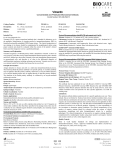
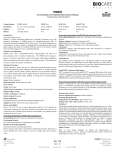
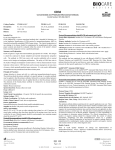
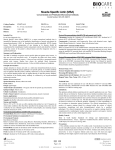
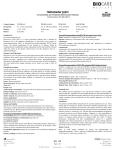
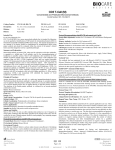
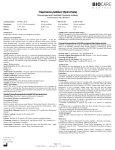
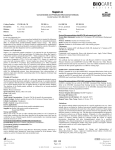

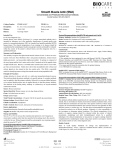

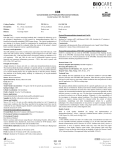
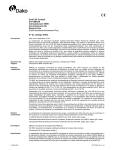

![Progesterone Receptor (PR) [16]](http://vs1.manualzilla.com/store/data/005703733_1-5d4a6a4c070c4aacc906912b3410a27a-150x150.png)


